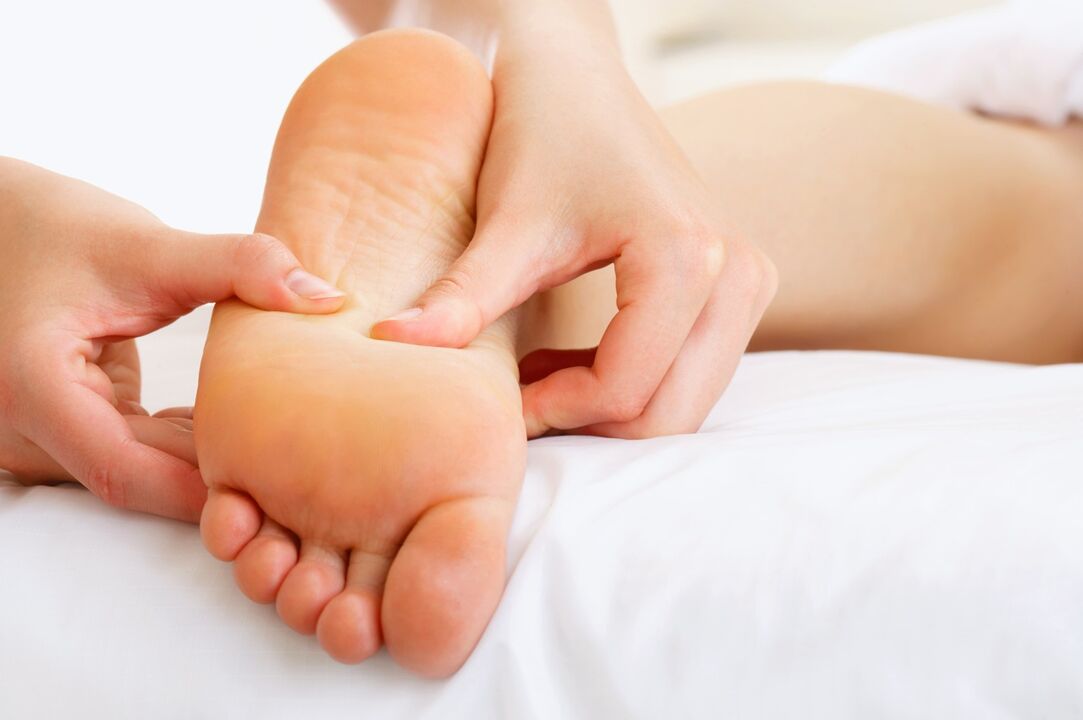
Mycelium on legs: how to identify it?
- The skin on the feet becomes red, enlarges in area and begins to peel off. Usually the disease occurs in one leg, but if left untreated, it can spread to the other leg.
- Small bubbles with a diameter of 2 to 8 mm appear in the arch of the foot. These bubbles gradually become larger, fuse together, and eventually burst, causing erosion. The affected skin becomes itchy, and the fungus can spread to the soles or tops of the feet. Sometimes a bacterial infection is added to the fungal infection, and then the contents of the blister turn into pus, and the patient complains of severe pain and general discomfort.
- The fungus "settles" between the toes, causing painful cracks to form that increase in size over time. The patient had difficulty stepping on his foot and experienced severe pain. Erosions, ulcers, and swelling may occur. In advanced cases, patients' temperatures rise and their condition worsens.
- Fungus can affect nails, causing them to become deformed, thickened or thinned, brittle, discolored, and ingrown. If fungal disease goes untreated for a long time, your nails may never return to their original appearance, leaving you without the chance to show off a pedicure for the rest of your life.
What should you do if you encounter fungus? What not to do?
How do you get a fungal infection?
Most susceptible to fungal diseases:
- Immunocompromised people;
- People with damaged skin on their feet (after an unsuccessful pedicure, injury or excessive force during hygiene);
- Wearing wet socks or shoes (especially in hot weather or when wearing winter shoes in a warm room);
- Not taking foot and nail hygiene seriously.
How do fungal diseases "attack" a person?
- Through soil or floor coverings that someone with a fungal infection walks on. Therefore, you should not walk barefoot in unfamiliar places or even at home. Sun-warmed beach sand or pebbles are actually safe, and seawater is an excellent way to prevent fungal diseases.
- The risk of infection in swimming pools, saunas, showers, etc. in public places and hotels is very high. Don't forget to bring special shoes with you.
- Don't wear shoes that other people have owned: It doesn't matter whether you want to buy them at a second-hand store or just try on a friend's shoes and evaluate how they look on you.
- Do not use other people's hygiene products - washcloths, washcloths, etc. Check disposable hotel slippers carefully to make sure you get a brand new pair.
Fungus Free: We Treat Fungal Diseases
- Wash your feet with products recommended by your doctor. After completing the sanitation procedure, clean the tub thoroughly.
- Walk around the house in closed slippers.
- Wash your clothes separately, treat your shoes with an antifungal, and change your socks several times a day to prevent sweaty feet.
- The apartment is ventilated and wet cleaned daily.
- After treatment is complete, throw away shoes, socks, towels, and washcloths that were used during your illness.
Prevention: No fungal disease!
- Wash your feet regularly and thoroughly, but do not use excessive force (so as not to damage your skin and nails);
- Shoes – your own only;
- Pedicures - may only be performed using your own tools or in a salon that complies with all regulations and rules;
- Wet or sweaty feet are your enemy, change into dry shoes immediately;
- Socks – clean only;
- Walking barefoot is prohibited except on the coast;
- Monitor your health and adhere to your daily habits—fungus can be dangerous to a weakened body.
















